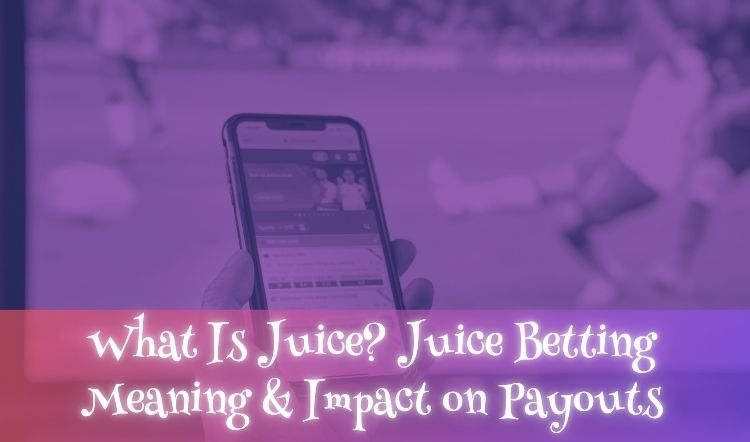
Many people spot the term “juice” or “vig” on betting lines and wonder what it actually means. It may look like a small detail, but it plays a notable part in how prices are set and how much a bet might return.
Knowing how juice works helps explain how odds are built and how much of a stake goes into potential returns compared with the bookmaker’s margin. This blog post covers what juice is, why it is added, how it affects potential payouts, and shows a few clear examples across popular sports.
Read on to learn more.
What Does Juice Mean In Sports Betting?
In sports betting, “juice” is the fee a bookmaker builds into the odds. You might also hear it called the “vig”. It is not a separate charge added on at checkout. Instead, it is part of the price you see, which means the payout on a winning bet is slightly lower than it would be at true even terms.
Think of it as the difference between the true odds and the odds offered. If a football match is evenly balanced, pure even money would be 1/1 (2.00). When both teams are listed at 10/11 (1.91), that short step down is the juice at work, shaping the return a bettor might receive.
Juice appears on most markets, although the level may vary. It tends to be tighter on major events with high interest and a little wider on smaller or more complex markets.
Curious why this margin is there in the first place? That leads neatly to the next point.
Why Do Bookmakers Add Juice?
Bookmakers add juice to keep their service running and to handle uneven activity across events. It covers everyday costs such as staff, technology and compliance, but it also serves a pricing purpose. By building a margin into the odds, bookmakers might withstand uneven wagering on either side of a market and reduce the chance of an overall loss on the event.
In practice, this shows up as an overround. If you convert all outcomes in a market into implied probabilities and add them together, you will often get a total above 100%. That extra few percent is the bookmaker’s margin. On very popular two-way markets, it might be only a small amount. On niche or fast-moving markets, it might be higher to account for greater uncertainty.
From a player’s point of view, the key point is that juice is always included in the price you see. That is why similar markets at different sites may show small differences in odds, reflecting different margins or pricing views.
With that in mind, it may help to see how this margin can change the potential returns on a bet.
How Does Juice Affect Your Payouts?
Juice reduces the return on a winning bet compared with the true odds. The difference may look small on a single wager, but it becomes more noticeable over time.
Here is a simple comparison. At true even money, a successful £10 stake would return £20 in total. If the market is priced at 10/11 (1.91), the same £10 stake returns £19.09 in total, a £0.91 difference. The shortfall is the built-in margin working through the price.
You may also see the effect through implied probabilities. Two outcomes, each priced at 10/11, carry implied probabilities of about 52.4%per side. Added together, that is roughly 104.8%, showing a margin of about 4.8% on the market. That extra slice is what narrows the potential payout.
Remember that sports betting always involves an element of chance, and no outcome or profit can be guaranteed. Keeping this in mind may help you set realistic expectations when comparing markets and deciding if a price reflects your view.
Examples Of Juice Impact On Different Sports Bets
To make the effect clearer, here are a few familiar situations where juice shows up in the odds and in the returns:
- Football: When two teams are closely matched, you might see both listed at 10/11 (1.91). A successful £10 stake would return £19.09 in total, rather than the £20 you would get at true evens. That short difference reflects the margin.
- Horse Racing: An even-chance runner would be evens (2.00) on a fair line. If it appears at 10/11 (1.91), the total potential return on £10 drops to £19.09 instead of £20. The cut in potential payout is the juice.
- Tennis: For an evenly matched contest, both players may be set at 10/11 rather than 1/1. The pricing narrows the potential return in the same way as the football example.
Understanding juice places the numbers you might see on screen into context. It shows how bookmakers shape markets, and it can help you consider whether a price suits your own judgement.
If you decide to place a bet, keep to a budget and only stake what you are able to afford to lose. Set limits that suit your circumstances, take breaks, and avoid chasing previous outcomes. Betting should remain a discretionary activity, and support services are available if you ever feel you need them.
**The information provided in this blog is intended for educational purposes and should not be construed as betting advice or a guarantee of success. Always gamble responsibly.
